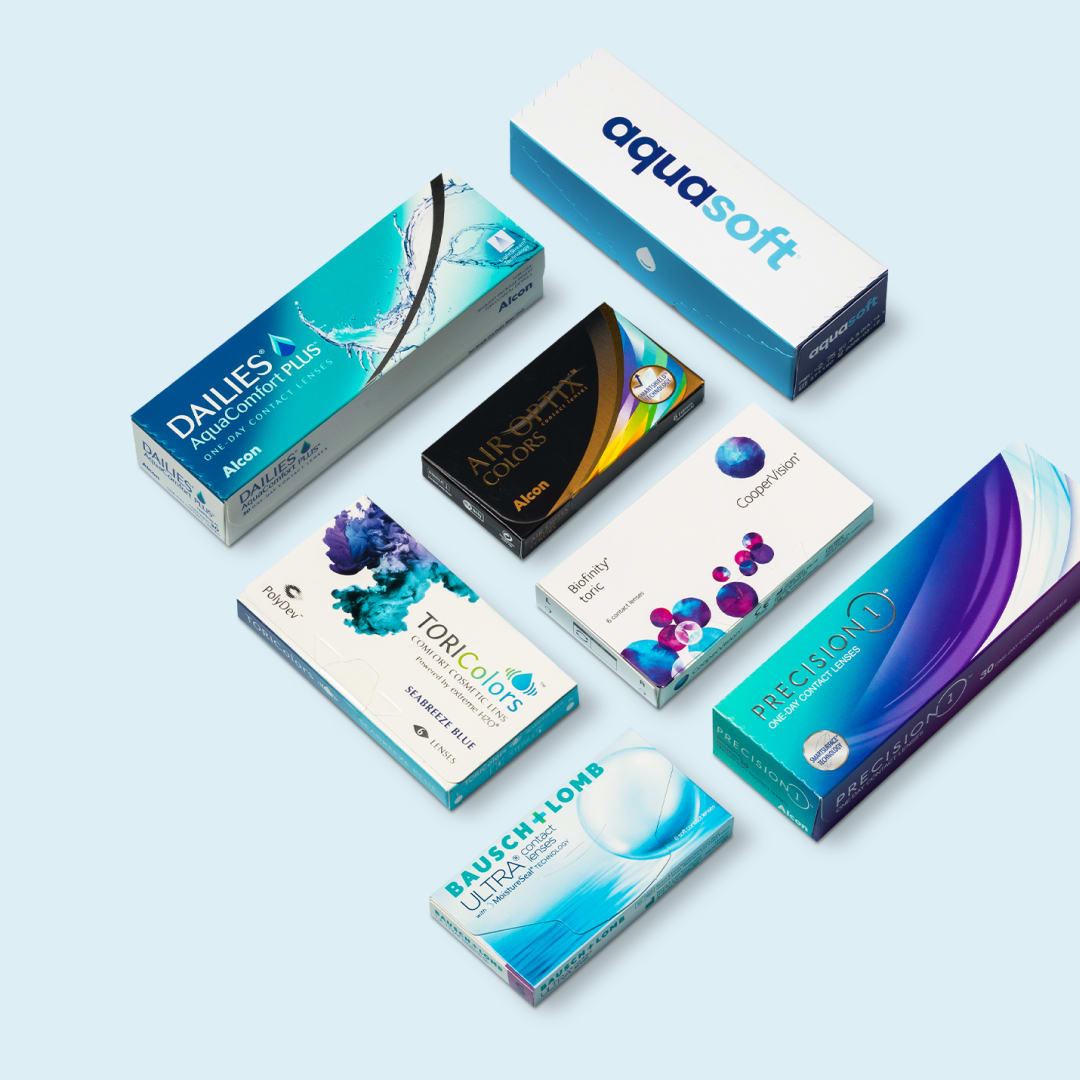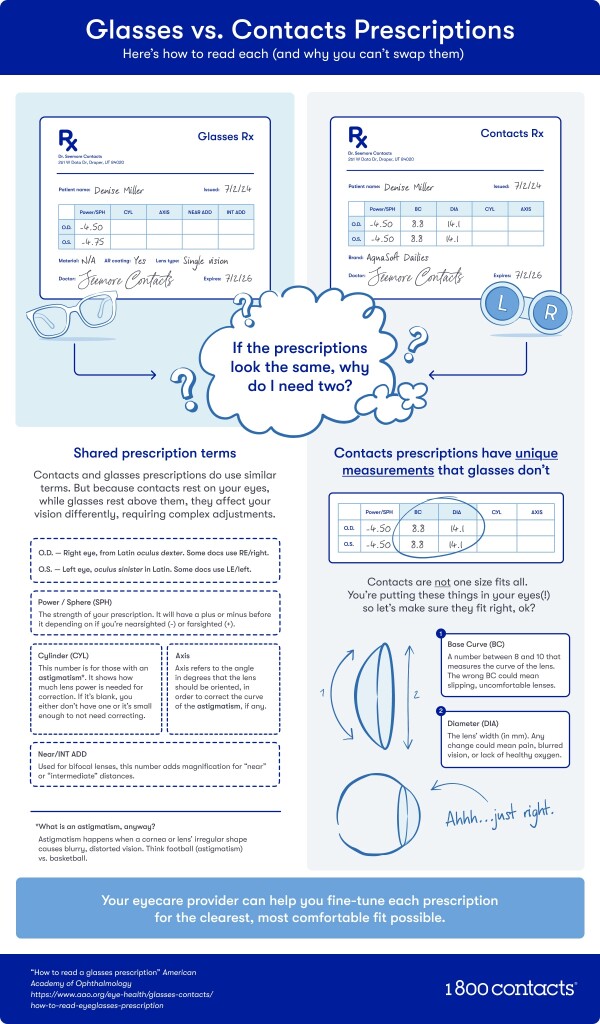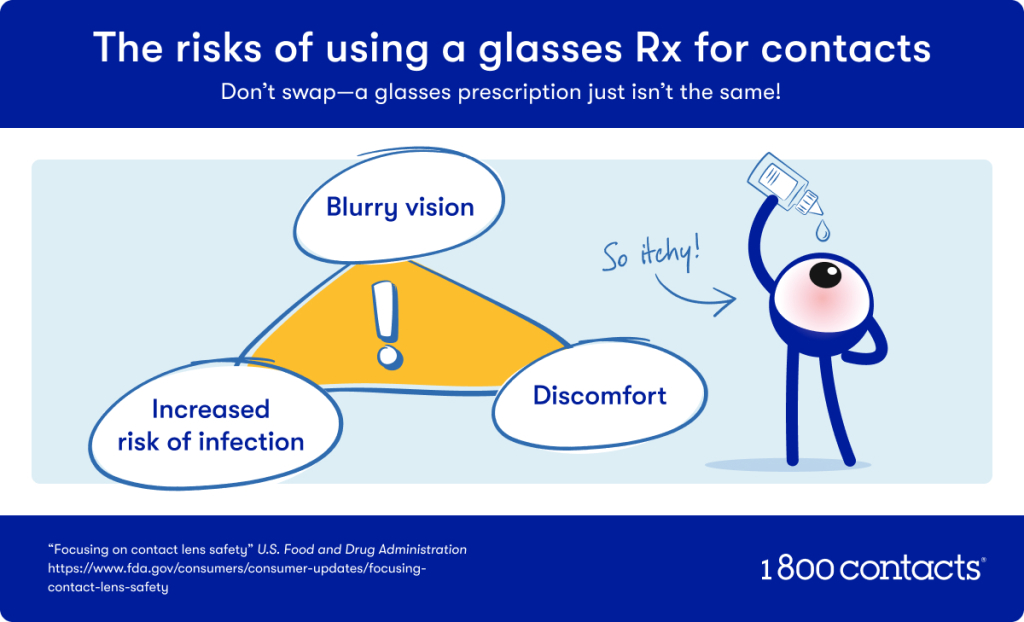Difference between glasses and contacts prescription
So, you’ve got a prescription for glasses, and now you’re wondering, "Can I just use this same piece of paper for contacts (spoiler alert: no.)?” But don't worry, you’re not alone. We’re here to walk you through the important, and surprisingly interesting, differences between glasses and contacts prescriptions. And no, it’s not just about the fact that one involves something resting on your nose and the other involves something you poke in your eye (with love, of course).
Are contact prescriptions the same as glasses?
Ah, the big question. Is your glasses prescription the same as your contact lens prescription? We hate to break it to you, but nope. It’s kind of like trying to wear your shoes as gloves (not quite right and probably uncomfortable). While both types of prescriptions are meant to help you see clearly, they take into account some pretty different factors.
Understanding prescription fundamentals
Let’s start with the basics. When you get a prescription for glasses, it includes a bunch of fun terms like "sphere," "cylinder," and "axis" (and no, that’s not a new yoga workout). This describes how strong your lenses need to be to correct your vision. Contact lens prescriptions, though, add in extra details like base curve and diameter. These make sure the lens fits snugly on your eyeball (because one size fits all is definitely not a thing when it comes to your eyes).
Factors influencing prescription differences
Contacts sit directly on your eye, whereas glasses chill out a few millimeters away on your face (which doesn’t seem like much, but in the world of optics, it’s a big deal). That little bit of distance means the power of your lenses, which is how much they bend light, has to be adjusted. Contacts also have to match the curvature of your eye, while glasses just need to fit the general shape of your face (and your personal style, of course).
Converting contact prescription to glasses
Now that you’re an expert in why your contact and glasses prescriptions aren’t identical (or you’ve at least nodded along), let’s get into the nitty-gritty of whether you can convert one prescription to the other.

The Framery at 1-800 Contacts
Get premium frames starting at $79
Shop glasses
How prescriptions are calculated
Converting a contact lens prescription into a glasses prescription is a little like translating languages. You can do it, but you might lose some nuance. Your eye care professional uses a formula that accounts for the distance between your glasses and your eyeballs. It’s not just a matter of swapping numbers; there’s a surprising amount of math involved.
Considerations and limitations
Here’s the catch: While it’s possible to convert your prescription, it’s not perfect. Factors like astigmatism (that’s when your eye is shaped a little more like a football than a basketball) can make it trickier to get an exact match. Plus, contacts move around on your eye, whereas glasses stay put, so it’s important to get each prescription just right for the best results.
Can I use my glasses prescription for contacts?
Using your glasses prescription to order contacts can lead to all kinds of discomfort (and who wants itchy, dry eyes?). Worse, it can cause your vision to be blurry or distorted. We know it might feel like a hassle to get a separate contact lens prescription, but trust us, it’s worth it.
Getting the right prescription
If you’re ready to get a contact lens prescription, all it takes is a professional eye exam. Your provider will check the fit of the lenses on your eye (remember that base curve we talked about?) and make sure your prescription is accurate. Once that’s done, you’ll be good to go with clear vision and happy eyes!
Find your glasses and contacts without a hassle
Ready to see clearly? We’ve got everything you need, from the latest in contact lenses to stylish glasses (because who says you can’t rock both?). Need help shopping for either? Let us know. We're happy to help.

Order Contact Lenses Online
Learn how to order contact lenses online at 1-800 Contacts
Order contacts
FAQs
What are the main differences between a glasses and a contact lens prescription?
A glasses prescription includes measurements for how much correction your eyes need, while a contact lens prescription adds details like base curve and diameter for proper fit.
Can a contact lens prescription be higher or lower than a glasses prescription?
Yes, your contact lens prescription can be slightly higher or lower due to the different distances between the lenses and your eyes.
How often should I get my prescription reevaluated by an eye care professional?
It's recommended to have your eye prescription checked at least once a year to ensure your vision is being properly corrected.
Did you know you can order contacts online?
Say goodbye to trips to the eye doctor and hello to convenience! With 1-800 Contacts, you can easily order your contact lenses online and have them delivered straight to your door. Plus, our online vision exam makes it simple to get the prescription you need without leaving home. And the best part? You’ll save money on your first order with 1-800 Contacts. It’s never been easier to get your contacts!
Original published: 3/11/2020
Updated: 11/26/2024







